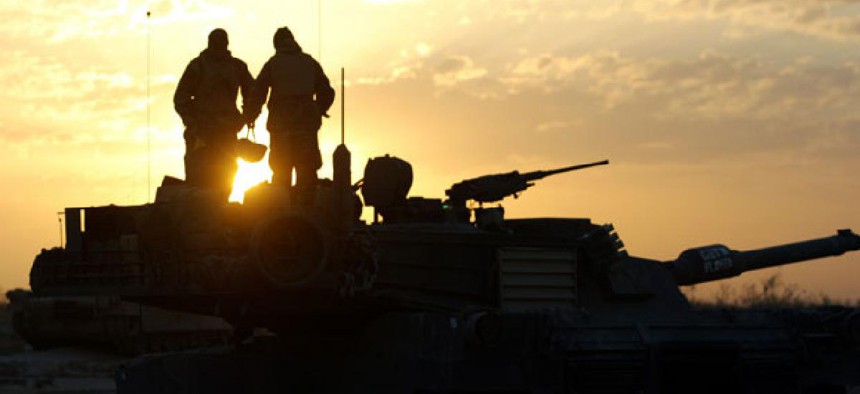Wounded Marines at Camp Pendleton spend two years in administrative limbo

Laurent Rebours/AP file photo
The slow-moving process almost entices warriors to stay sick, volunteers tell IG.
Marines in the Wounded Warrior Battalion at Camp Pendleton, Calif., spend an average of two years, or 730 days, waiting to transition back to active duty or to discharge, and this lengthy process impedes recovery, according to the Defense Department inspector general.
The Defense and Veterans Affairs departments have set a goal of 295 days to process troops through the Integrated Disability Evaluation System. At Camp Pendleton it took medical evaluation boards more than two-thirds of that time -- 197 days -- just to complete their assessments.
Russell Beland, deputy assistant secretary of the Navy for military manpower and personnel, in comments appended to the IG report, flatly declared the goal to move troops through IDES in 295 days “unrealistic,” but said the Navy will work to get as close to it as possible.
Beland said the Navy now manages all IDES case file transfers electronically and is developing technology to make it easier to share discharge information with VA. He said the branch also has streamlined medical narrative summaries, which should speed the medical review process.
Administrative and medical staff at the Camp Pendleton Wounded Warrior Battalion told the IG that the more time Marines and corpsmen spent in transition, “the more likely a warrior would abuse alcohol, or take risks that would ultimately get them into trouble.”
The traumatic brain injury clinic staff at the Camp Pendleton Naval Hospital said wounded Marines reported feeling “useless” as they spent time dealing with seemingly unending administrative processes. As time stretched out, “the less productive and more frustrated the warriors became,” staff said. Two warrior battalion volunteers with experience working with Vietnam veterans, homeless veterans, and veterans of Iraq and Afghanistan deployments told the IG that the recovery and transition processes “almost enticed the warriors to stay sick.”
An unidentified commander of the Camp Pendleton Wounded Warrior Battalion told the IG that “there were too many databases and information technology systems to track and manage warriors’ recovery and transition and many of the programs did not interface with each other.”
The battalion uses two computer programs to manage troops in their care: the Recovery Coordination Program-Support Solution, or RCP-SS, a secure, Web-based access tool to administer all aspects of the recovery program with multiple online forms, and the Marine Corps Wounded, Ill and Injured Tracking System, or MCWIITS, which helps oversee nonmedical transition processes.
But battalion staff told the IG that these two programs have a poor interface that requires care coordinators to manually enter information from one into the other. “This made keeping the information accurate and up-to-date in every computer system a challenge," the IG reported.
VA federal recovery coordinators, who work with the battalion, use a more user-friendly Web-based program, staff told the IG, recommending the Marine Corps use it, too.
Lt Gen. John Wissler, deputy commandant for programs and resources, said in his comments to the IG that the Marine Corps will work with agencies at the Defense Department and the Navy levels to ensure interfaces allow bidirectional information transfers.
The Wounded Warrior Battalion also serves troops stationed at the Marine Corps Air Ground Combat Center in Twentynine Palms, Calif. Staff at that base reported problems with computer interface with the Naval Medical Center in San Diego, which provides treatment for their wounded Marines.
Medical personnel at the base and hospital both use the Composite Health Care System, part of the Armed Forces Longitudinal Technology Application -- or AHLTA -- electronic health record, but a Twentynine Palms nurse case manager said medical appointment information had to be retyped or cut and pasted into the San Diego system. Sometimes the Twentynine Palms system “is referred to as ‘the black hole’ in regards to processing referrals,” the nurse said.
The IG said incompatibility between systems must be resolved. “Warriors will continue to be at risk of delayed recovery and transition as long as [military treatment facilities] experience difficulty with the electronic interface sharing of CHCS data,” the report said.
NEXT STORY: BYOD for Beginners



